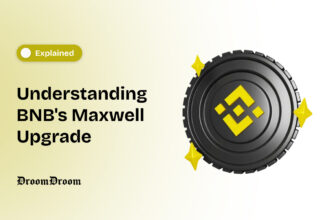Isolated margin Vs cross Margin trading: Margin allows traders to control large amounts of money from a small sum. For example, one can control $10,000 using $1000 with a 10X leveraged margin. There are two modes of margins, cross and isolated. In this article, we will look at each of them and write down their differences.
The key difference between cross and isolated margins is that; Cross margin puts a trader’s entire portfolio as collateral to fund multiple leveraged trading positions. In isolated margin, the trader allocates a portion of their portfolio as collateral to fund to a single margin position.
To put margin trading into context, traders usually leverage their positions using an initial collateral so that they can benefit more from a price change. However, they lose more if the price changes against their analysis.
What is Margin Trading?
Margin trading is the process of borrowing funds from a brokerage platform or exchange so that one can buy more assets. Since the assets in their account cannot afford the position they want to open, the traders use margin to fund larger positions. The assets in their account serve as collateral for taking on the debt. If the price goes as they want, margin traders are able to unlock even bigger profits.
For example, Peter who has $10,000 believes the price of Bitcoin (BTC) will rise. Peter may choose to purchase $10,000 worth of Bitcoin directly without margin or leverage their position using borrowed funds. Assuming the price of BTC went up by 40%, Peter’s investment will generate $4,000 assuming he did not use margin. Which means his investment will be $14,000, a 40% rise in initial investment.
On the other hand, Peter would have used a leverage of 5:1 to increase his initial investment capital by four times. This means Peter’s initial investment will be $50,000. Hence, a 40% increase in the price of Bitcoin will put Peter’s total investment at $70,000 ($50,000 initial + $20,000 profit). After paying back the $40,000 debt, Peter will have made $20,000 in profit. Isn’t that a 100% profit from a $10,000 initial investment?
There are two types of margins, initial margin and maintenance margin. It is important not to confuse between the two modes of margin (isolated margin vs cross margin trading) and these two types of margins.
Initial Margin and Maintenance Margin
Initial margin refers to the minimum amount of assets you need so as to execute a leveraged position. For example, there is a minimum amount of assets you need in order to unlock $100,000 in Bitcoin value. The percentage of initial margin requirements depends on the exchange. However, it bears mentioning that well-established platforms might have strict margin requirements compared to upcoming platforms. This is because upcoming platforms want to stand and woo new traders.
Maintenance margin is the amount of funds that a trader needs so as to maintain their leveraged position. With insufficient maintenance margin, a position could close earlier than expected and result in losses. However, experts advise against over maintaining your margin positions as this could result in severe losses where the price action drastically goes against expectation. In addition, remember that maintenance margin changes are related to cryptocurrency price changes.
Meanwhile, the trading platform will always send a notification whenever the price action is almost about to compromise your margin position. This notification is called a margin call. A margin call usually forewarns the trader that their position is about to be liquidated. Where the trader does not have sufficient margin to place their trade, it might become impossible to maintain their leveraged position. Thereby forcing the trader to cancel their position. Which often results in loss of funds.
Isolated Margin Vs Cross Margin Trading
Continue reading to explore isolated margin Vs cross margin trading when investing in cryptocurrencies.
Modes of Margin
- Cross Margin: Cross margin utilizes all the available funds in your portfolio as collateral for all your trading positions. This means that if you have multiple open positions, the one in profit can cover the losses for the losing position.Thereby allowing the trader to keep their positions open for a longer time.
- Isolated Margin: This margin mode denotes that the amount of margin is specific to a single open position. Therefore, this means that the trader has an upperhand when deciding the portion of their portfolio they’d like to allocate towards that single position. Isolated margin only affects the funds you decide to allocate as collateral.
Let’s put each of these modes (Isolated margin Vs cross margin trading) into deeper perspective in the section below:
Isolated Margin
Isolated margin in crypto describes a trading mode where the trader allocates a particular amount of collateral to a single position. The amount of collateral is isolated from the rest of the account’s funds. Which means that whatever happens throughout the trade, the rest of the portfolio will remain unaffected. As a risk management strategy, isolated margin allows the trader to mitigate any compromises to their trade in time. Hence, traders have the freedom to pursue other strategies in their trading accounts without worrying about the risk of liquidating their entire portfolio.
In simpler words, isolating the risks of each trade prevents losses from one position spreading to other positions. It is important for traders to carefully balance their position sizes and collateral allocation when using isolated margin. This will make sure they neither underfund or over leverage their positions. Other risk management practices to use alongside isolated margin trading is initiating a margin call for one to modify their margin size incase loss hits a certain threshold.
For example, Peter has a total of 10 BTC in their account balance. He longs Ethereum (ETH) using a 5:1 leverage and allocates 2 BTC as the isolated margin. This means that Peter will be trading with 10 BTC worth of ETH, i.e 8 BTC in leverage + 2 BTC his own money). If Peter closes the position after the price of Ethereum goes up, he makes additional profit. Hence adding to his initial investment of 2 BTC.
Suppose the price goes against his expectation and falls drastically, Peter can have a maximum loss of 2 BTC. The amount in his isolated margin. Nevertheless, the 8 BTC remaining in his account remains untouched even if Peter’s Ethereum position becomes liquidated. In order to protect himself from liquidation, Peter may opt to use a stop loss.
Pros and Cons of Isolated Margin
Pros
- Simple to calculate profit and loss
- Controlled risk
- High predictability which is essential for sound risk management
Cons
- Traders need to closely monitor their trades
- Limited amount of leverage
- Management cost
Cross Margin
Cross margin denotes a trading strategy where one can open a number of leveraged positions using their portfolio as collateral. Suppose you have a list of open positions and would be interested to pursue more. On the other hand, the margin requirements are too high. Thereby making it too difficult or impossible to cover both the initial and maintenance margin. A trader may employ cross margin in this case to consolidate their list of leveraged positions. The advantage is that profits from one open position can cover losses in another position when using cross margin.
It bears mentioning that using the entire portfolio as collateral to a margin debt is highly risky. However, the good thing is traders can open large positions with less money. While the strategy is risky, it does act as a protective buffer against the liquidation of individual positions. Traders should be more careful with cross margin, take time to monitor their positions closely, initiate margin calls and also place stop limit orders. However, inexperienced traders are highly advised to understand the margin policies of their trading platform before cross margining.
An example of cross margin would happen if Peter has 10 BTC in his account balance and wants to open multiple leveraged positions. However, instead of isolating the risks for each leveraged position, Peter decides to allocate his entire account balance as collateral for all of these positions. Hence, Peter longs Ethereum (ETH) using 4 BTC and a 2:1 leverage. Furthermore, Peter opens another position by shorting Solana (SOL) using 6 BTC and a 2:1 leverage. For this reason, both positions use the account balance of 10 BTC as collateral.
Let’s say Ethereum’s price performs against Peter Long’s position and goes down. On the other hand, Solana’s price goes down as expected and Peter’s short position gains profit. The profit from the short position will cover the losses on the long position. Therefore making it possible for both positions to remain open for a good amount of time.
Cross Margin vs. Isolated Margin: Unraveling the Key Differences!
Discover how to maximize your gains and manage risks effectively. Check out this must-read article now from #Huobi Learn
— HTX (@HTX_Global) May 7, 2023However, risk of liquidation is also high incase both of Peter’s positions don’t perform as expected. This would happen if losses on both sides exceed the total portfolio balance of 10 BTC.
Pros and Cons of Cross Margin
Pros
- Added flexibility when allocating margin
- One position can offset lose in another position
- Risk of liquidation is low
- Simple management, hands-off approach
Cons
- Total loss could be high if trades go unexpectedly.
- Less control on single individual trades
- Chances of overleveraging are high
- Reduced clarity on the amount of risk
Key Differences Between Isolated Margin Vs Cross Margin
Find out about the differences between isolated margin vs cross margin in this section.These differences are solely based on the amount of associated risk, flexibility across different trading strategies, collateral requirements, liquidation mechanism and use cases.
Isolated Margin Vs Cross Margin
- Risk Management: Isolated margin provides traders with granular risk management unlike cross margin which combines the total risk of all open positions. For this reason, Isolated margin becomes more appealing when risk managing individual positions. On the other hand, cross margin is suitable when managing multiple positions so that one position could offset the risk in another open position. However, the combined risk on cross margin is high and has the potential to cause massive losses.
- Flexibility: Traders can manually add maintenance margin funds on an isolated margin position to keep the position open for longer. On the other hand, cross margin utilizes the account’s total balance to fund the amount of margin so as to prevent liquidation. This means that while isolated margin requires human intervention, cross margin is a more hands-off when it comes to maintaining the margin balance. As you can see, the flexibility across both modes of margin is different.
- Collateral requirements: Isolated margin requires one to set aside a particular portion of their money to risk for an individual position. On the other hand, cross margin requires one to put all the funds in their account to risk. This means that in cross margin, an open position will utilize the balance in your account to protect the trade against liquidation. For this reason, cross margin is highly risky as it puts the entire portfolio to risk.
- Use cases: Isolated margin favours traders who intend to manage the risk of individual trades on a per-trade basis. Particularly, when the traders are convinced that a particular trade has high potential. One popular trading strategy is where isolated margin traders risk 20% of their account balance to profit 80% more. On the other hand, cross margin is suitable for traders who intend to hold multiple positions and hedge them against each other. Furthermore, cross margin is well-suited for traders who would want a more hands-off approach to trading.
Conclusion: Isolated Margin Vs Cross Margin
Isolated margin vs cross margin: Considering the above discussion and evaluation of both isolated and cross margin, one has more clarity on the most suitable margin mode for their trading strategy. Cross margin is more appealing to experienced traders with sufficient balances for collateralising multiple trading positions. Isolated margin which is less risky is suitable for traders who have high conviction on a single trade and would not want to spread risk across multiple positions. In understanding your risk management strategy, your trading strategy, both of these margins will be more clear and you will learn how to find the balance between both of them when trading.



















